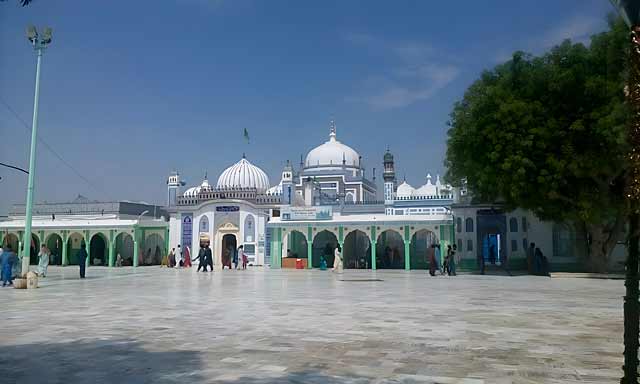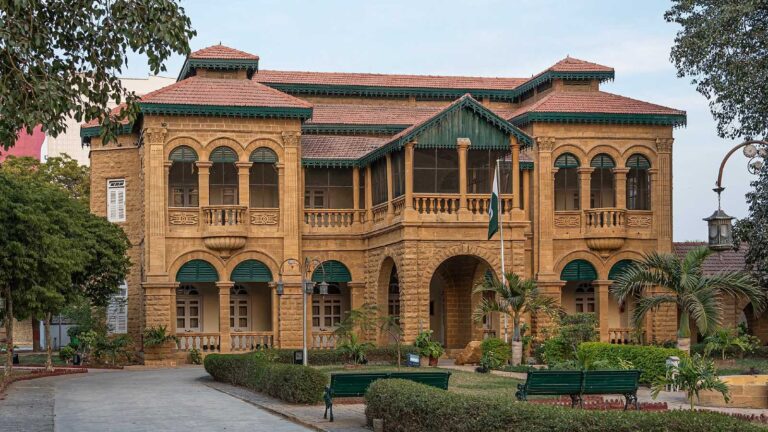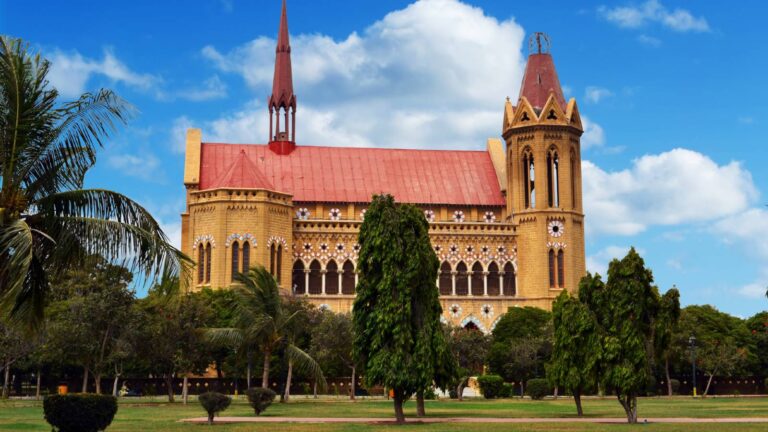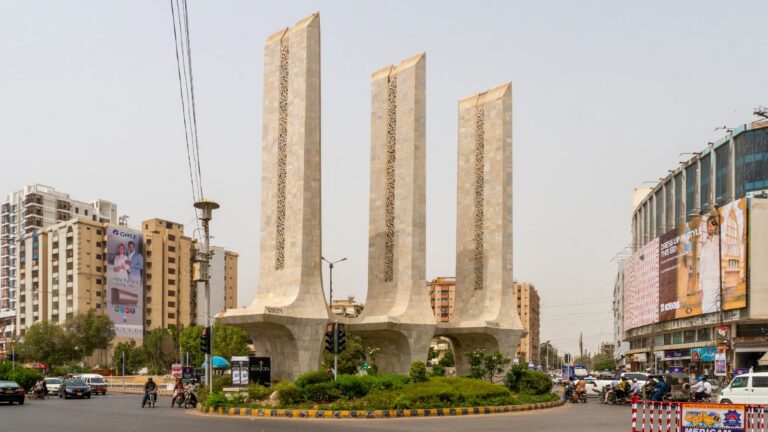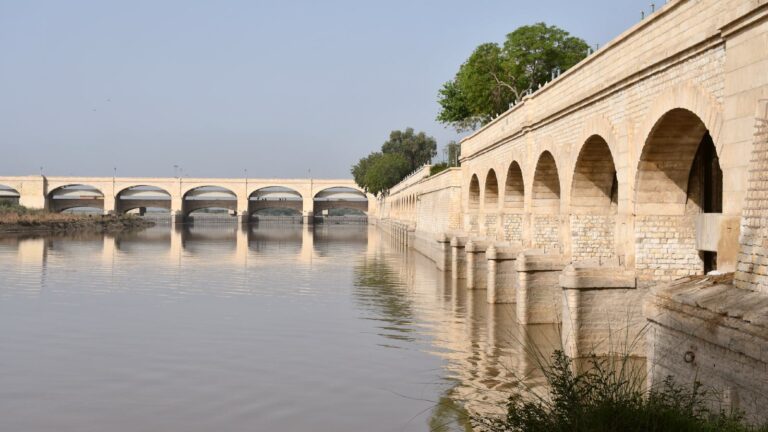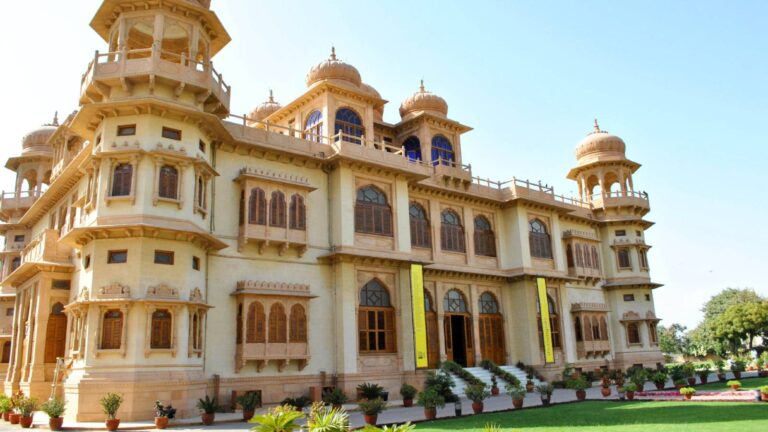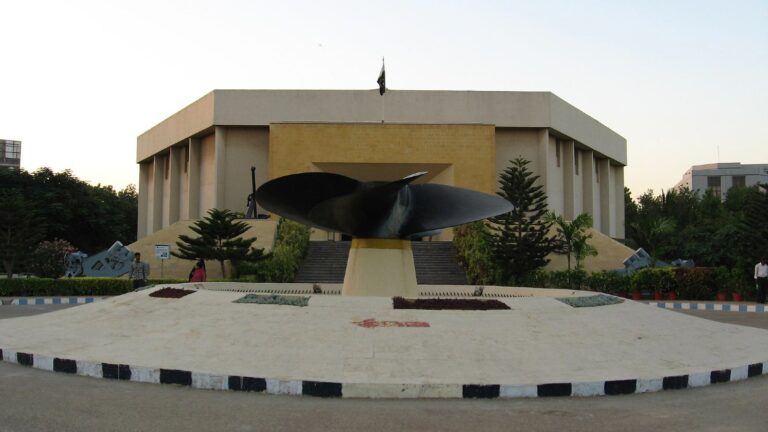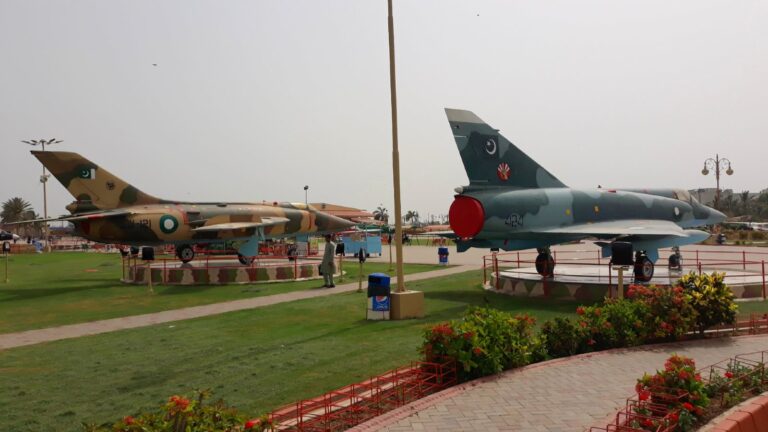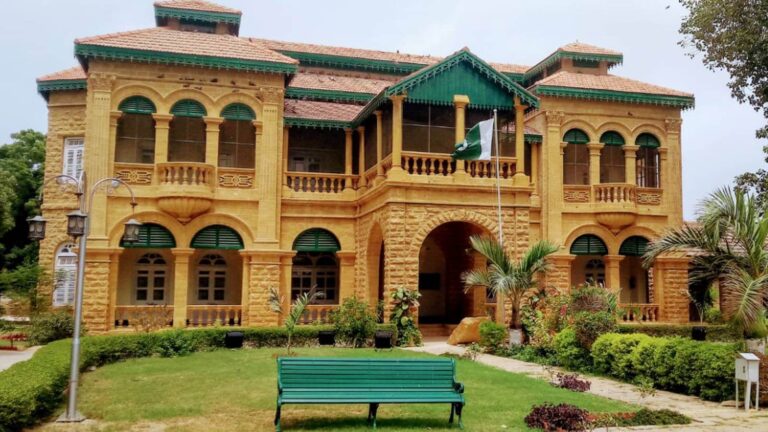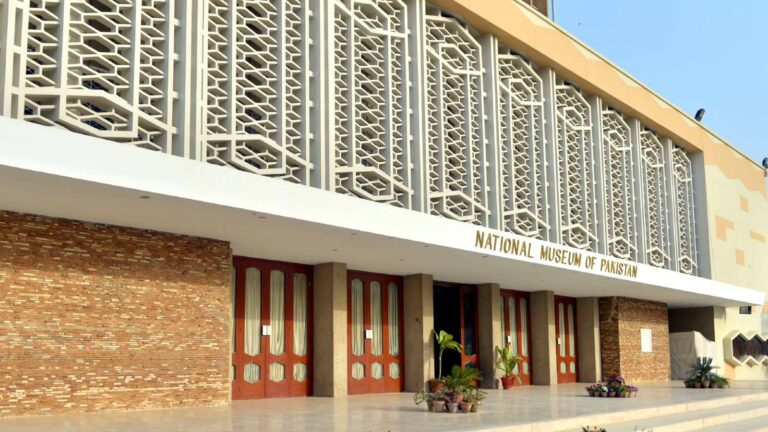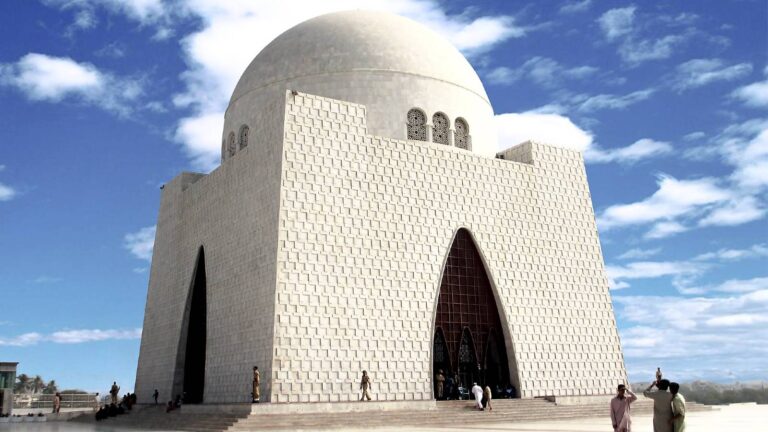Main image: SHAHBAZ SAF, CC BY-SA 4.0, via Wikimedia Commons
Getting There
Darbar Shah Abdul LatifBhittai is located at Bhit Shah, Matiari, Sindh, 212 KM from Karachi. Via Karachi – Hyderabad Motorway.
What to Expect
Shrine of Shah Abdul LatifBhitai is one of the most loved places of the Sindh province. It thrives with extremely rich cultural heritage.
People from all over Pakistan and out of Pakistan visit the shrine and perform or Participate in various rituals related to Sufism and spirituality. There are musicians singing Bhitai’s lovely poetry in front of an audience whose members at times turn ecstatic and start dancing in a fitful ecstatic manner.
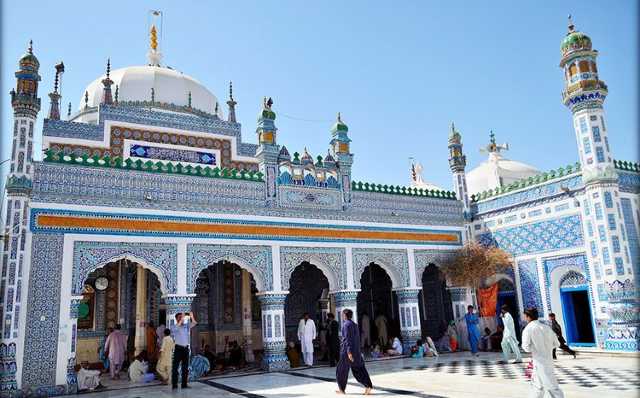
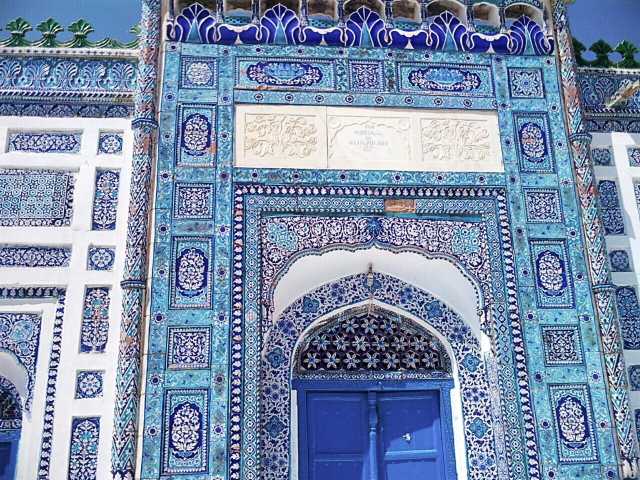
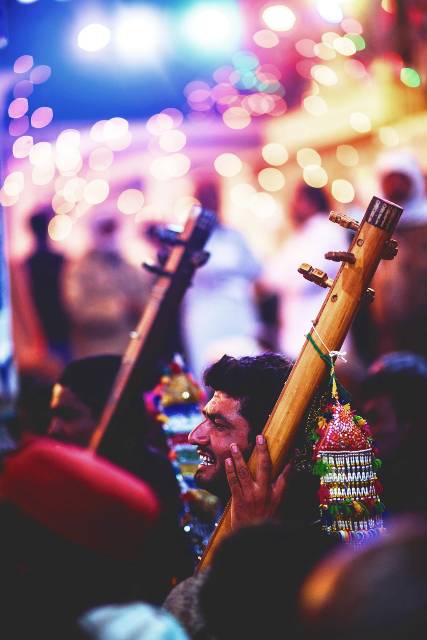
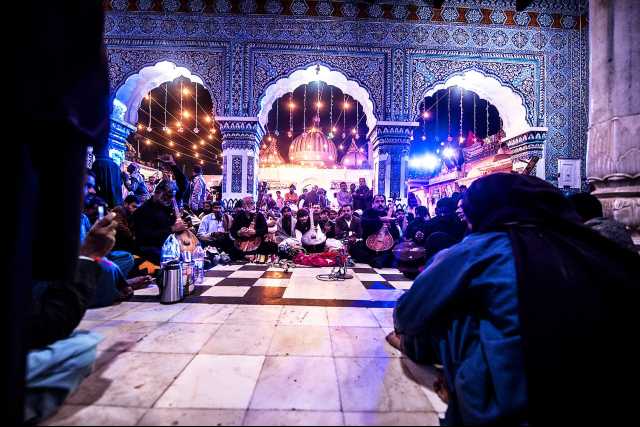
The building is a masterpiece of Islamic Traditional Art. The graves of the sufi and some of his loved ones are covered with beautiful wooden structures. The ceiling of the tomb is decorated with beautiful geometrical patterns and lovely colors. Walls also have lovely engravings and geometric patterns. The shrine can be called the epitome of Sindhi culture and the ancient Sufi tradition.
History
Shah Abdul Latif Bhittai commonly known by the honorifics Lakhino Latif, Latif Ghot, Bhittai, and Bhit Jo Shah, was a Sindhi Sufi mystic, and poet, widely considered to be the greatest poet of the Sindhi language.
Born to a Sayed family (descendants of the Islamic prophet Muhammad through his daughter Fatima) of HalaHaweli near modern-day Hala, Latif grew up in the nearby town of Kotri Mughal. At the age of around 20, he left home and traveled throughout Sindh and neighboring lands, and met many a mystic and Jogis, whose influence is evident in his poetry.
Returning home after three years, he was married into an aristocrat family, but was widowed shortly afterwards and did not remarry. His piety and spirituality attracted large following as well as hostility of a few. Some ten years before his death, Latif left his home, relocating to a sandhill a few miles from Hala Haweli, which later became known as Bhit Shah (Mound of Shah), hence his title Bhittai (the dweller of Bhit).
Latif died at Bhit on 21 December 1752 (14 Safar 1166 AH) at the age of 63 and was buried there. A Mausoleum was built over his grave by the then ruler of Sindh MianGhulam Shah Kalhoro in 1754, or 1765. And became a popular pilgrimage site.
His poems were compiled by his disciples in his Shah Jo Risalo. It was first published in 1866. Several Urdu and English translations of the work have been published since. Latifs poetry is popular among the people of Sindh and he is venerated throughout the province. Latifs poetry is mainly Sufi in nature and deeply religious. He connects the traditional folk tales with the divine love. The poems, known locally as bayt (pl. abyat) and similar in form to the Indian doha, are lyrical and are intended for a musical performance, and are usually very compact.
Facilities Available
There are numerous little stalls and shops right in front of the entrance where anyone can buy little souvenirs packed with a rich centuries old cultural heritage. Some stalls sell books related to Sufism, Sindhi culture and even books written by Shah Abdul Latif Bhitai himself.

